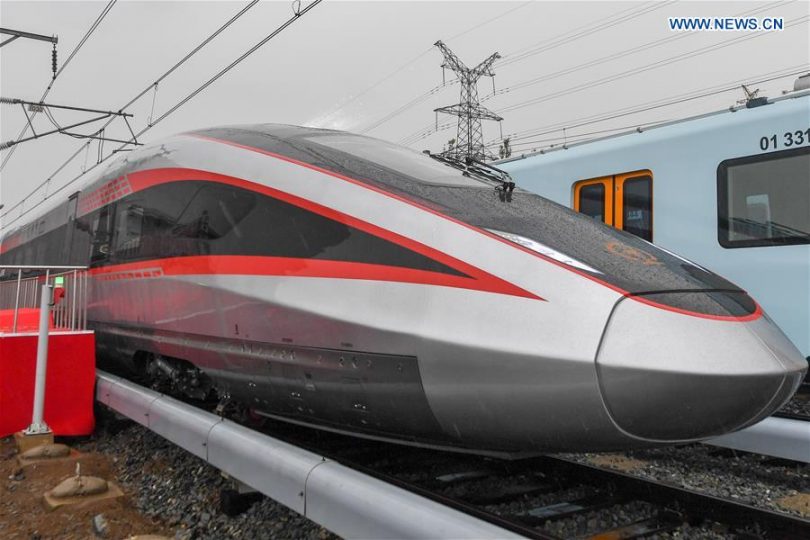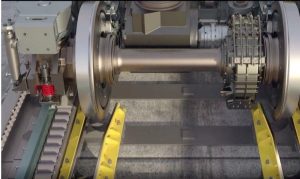[xinhuanet.com] – Chinese train maker CRRC Changchun Railway Vehicles Co., Ltd. last Wednesday in Changchun, northeast China’s Jilin Province, rolled out a new type of high-speed train which can run on different rail systems, Xinhuanet reports.
The new CRRC train, with a standard speed of 400 km per hour, has been developed to cope with different rail systems on international routes, making international rail travel more convenient.
The company said the train can operate in temperatures between -50 °C and +50 °C, and can also operate under different traction power supply systems and railway transportation standards of different countries.
Based on the prototype and technology, the company said to be ready to take orders for customized high-speed trains and train products according to the technical standards and operational requirements of various regions of the world.
There are currently many different, but five main railway track standards around the world (Iberian, Russian, Standard, Japanese, Meter gauge). When ordinary trains run between countries with different gauges, they need to replace their train bogies, which takes time and effort. As the new CRRC train is equipped with gauge-changing bogies, it can change its rail mode during cross-border travel – e.g. from Chinese to Russian railway network – greatly improving the efficiency of travel across rail systems.
Background
For through-operation, a train must be equipped with special bogies holding variable gauge wheelsets containing a variable gauge axle (VGA). The gauge is altered by driving the train through a gauge changer or gauge changing facility (see Wikipedia). There are several variable gauge axle systems:
- Talgo-RD. The Talgo system has been in revenue service in Portbou and Irun, on the Spanish-French border, since 1968:
Standard gauge 1,435 mm (4 ft 8 1⁄2 in) ↔ Iberian gauge 1,668 mm (5 ft 5 21⁄32 in). - CAF-BRAVA (from Construcciones y Auxiliar de Ferrocarriles) was originally designed in 1968 by the Vevey Company (absorbed by Bombardier Transportation).
Standard ↔ Iberian - DB Cargo–Knorr-Bremse, being developed in 2002 for use between Europe and Russia:
Standard gauge 1,435 mm (4 ft 8 1⁄2 in) ↔ Russian gauge 1,520 mm (4 ft 11 27⁄32 in). - DBAG–Rafil Type V for freight (from Radsatzfabrik Ilsenburg for Deutsche Bahn).
Standard ↔ Russian - Japan Railways RTRI (from the Japan Railway Technical Research Institute) to be used on motorised axles:
Standard gauge 1,435 mm (4 ft 8 1⁄2 in), Shinkansen lines, ↔ Japanese main line standard gauge 1,067 mm (3 ft 6 in), also named “CAP gauge” while first used by Norwegian Carl Abraham Pihl. - PKP SUW 2000 system produced by ZNTK Poznań for Polish State Railways:
Standard gauge 1,435 mm (4 ft 8 1⁄2 in) ↔ Russian gauge 1,520 mm (4 ft 11 27⁄32 in). - The Montreux-Oberland Bernois (MOB) railway, Switzerland :
Standard gauge 1,435 mm (4 ft 8 1⁄2 in) ↔ meter gauge 1,000 mm (3 ft 3 3⁄8 in).
The maximum speed of the trains equipped with the different technologies varies. Until now only CAF and Talgo produced high-speed VGA, allowing speeds up to 250 km/h.






